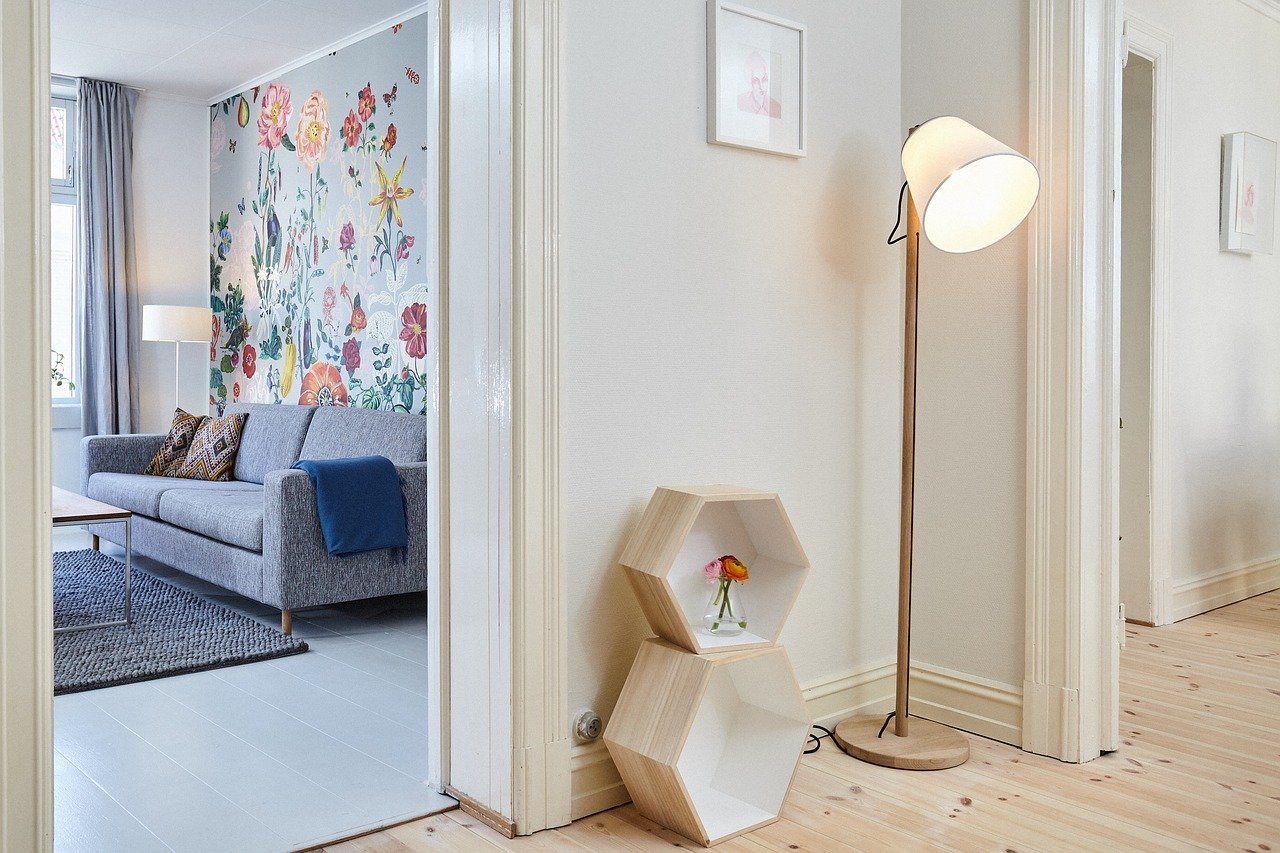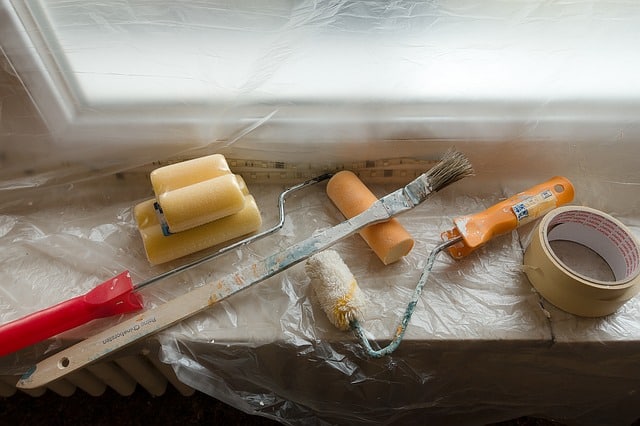Sometimes it may be necessary to join two skirting boards together to fit a long wall, and here a mitre joint would also be used. This allows for a better looking joint and also increases the glue surface area. They should be tacked with pins to prevent movement.
After cutting the mitres on both sides, check to see how well they fit together when placed against the wall. When you are happy they are fitting neatly, you can go ahead and fix them to the wall.
Cutting the boards at an uneven angle: scribe joint
The walls in the room are not always 90° to each other and this can upset your perfectly cut mitre joint. In order to deal with this, you should use a scribe joint whereby the end of one board is cut to follow the shape of the moulding.
The scribing method means that some of the skirting boards are laid down ‘whole’ (without any cuts), and the others are scribed around them. When cut properly, the joint sits perfectly into the board and flows over the designs and mouldings of the previous board. The joint can be undercut to allow it to sit into walls where they are not 90°.
It can be a tricky joint to master but even when cut roughly, decorator’s caulk or painter’s mate can be squeezed into the gap. The shape of the moulding can be cut with a coping saw or even a jig-saw.
To get the shape of the moulding, cut the end of the board at 45°. The shape of the moulding will now be easy to follow from the front profile. Another way is to use an off-cut and draw around it. This is not as accurate but will do the job.
Fixing the skirting boards into place
If the skirting boards are being fixed to a solid concrete wall, 50mm masonry nails are commonly used. It is imperative that you wear eye protection as these nails can spring back if they bend. Sink the nail head below the surface and fill with an appropriate filler before finishing.
If the skirting is being fixed to a stud partition wall, it may be necessary to find the vertical timbers that make up the stud and screw or nail the skirting to these. To find the studs, you can use a purpose-made stud finder that will beep when the tool is passed over a stud or you can use a sharp tool such as a bradawl to puncture the plasterboard behind the skirting to find a solid stud. The studs should be at 400mm centres but this may not always be the case and sometimes 600mm centres are used.
If you’re not too confident with nails or screws, you could use an adhesive based product. These usually fit into a silicon gun and can be squeezed out onto the back of the board. To hold them up against the wall while the glue sets, use heavy weights such as concrete blocks or heavy books.
When fixing the skirting to the wall, it is best to have the board pressed against the floor to eliminate any gaps between the floor and the bottom of the board. Using an off-cut, put one end on top of the skirting board and get someone to stand upon this or kneel on it yourself. When you’re telling someone that you will require their weight, ask tactfully!
Fixing the architrave into place
First you’ll need to outline where the architrave will sit by marking various points around the frame, roughly 6mm-10mm from the inside of the frame. Make sure to mark where the uprights and the head will meet.
Cut the upright slightly longer than it needs to be and stand it against the frame, then mark where the mitre will go on the timber and cut this on the mitre block or chop saw.
Cover the back of the architrave with adhesive and using 40mm-50mm oval nails, tack the upright into place. Use a nail punch to sink the nails below the surface, the area will then be covered up with a filler. Be careful to line up the architrave with the previously marked lines. Do the opposite upright in the same way.
To mark where you will need to cut the head, hold up the architrave above the two uprights and mark the position of the mitres for the top. Cut these the same way as before. Apply glue to the mitres and use panel pins to attach the head to the uprights from above.
Other frames
Once you master the mitre block and the scribe joint, there is no framing job you can’t tackle yourself. That’s because any decorative frame is done in much the same way as described above; they are cut at the correct angle and fixed using any of the methods outlined in this article. Take your time, measure twice and work safely!
- Pages:
- 1
- 2
















